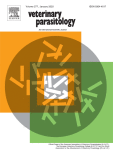Ver ítem
- xmlui.general.dspace_homeCentros e Institutos de InvestigaciónCICVyA. Centro de Investigación en Ciencias Veterinarias y AgronómicasInstituto de PatobiologíaArtículos científicosxmlui.ArtifactBrowser.ItemViewer.trail
- Inicio
- Centros e Institutos de Investigación
- CICVyA. Centro de Investigación en Ciencias Veterinarias y Agronómicas
- Instituto de Patobiología
- Artículos científicos
- Ver ítem
In vitro diagnosis of the first case of amitraz resistance in Rhipicephalus microplus in Santo Tomé (Corrientes), Argentina
Resumen
In Argentina, the cattle tick Rhipicephalus microplus has already developed resistance to organophospates and synthetic pyrethroids. However, no cases of amitraz resistance have ever been recorded in this country despite its heavy use. A recent failure of amitraz to control ticks in a farm located in Santo Tomé, province of Corrientes, resulted in the collection of samples for acaricide resistance diagnosis. The modified Drummond adult immersion test
[ver mas...]
In Argentina, the cattle tick Rhipicephalus microplus has already developed resistance to organophospates and synthetic pyrethroids. However, no cases of amitraz resistance have ever been recorded in this country despite its heavy use. A recent failure of amitraz to control ticks in a farm located in Santo Tomé, province of Corrientes, resulted in the collection of samples for acaricide resistance diagnosis. The modified Drummond adult immersion test (AIT) and the larval tarsal test (LTT) were performed separately in Argentina and Switzerland to evaluate efficacy of amitraz and other acaricides. The AIT showed that oviposition in the Santo Tomé field isolate was not inhibited when it was challenged to 250 and 500 ppm amitraz, and 50 ppm deltamethrin. However, oviposition was reduced by 90.6% when this field isolate was challenged to a combination of 400 ppm ethion and 100 ppm cypermethrin. To confirm the results obtained with the AIT, 2 additional tick samples were collected and shipped to Switzerland for resistance diagnosis of amitraz, cypermethrin and flumethrin, using the LTT. With this bioassay, the resistance ratios of the 2 field isolates were 32.5 and 57.0 for amitraz and between 5.9 and 27.2 for the synthetic pyrethroids. Both in vitro bioassays confirmed amitraz and synthetic pyrethroid resistance in the Santo Tomé samples. These results account for the first evidence of amitraz resistance in R. microplus in Argentina.
[Cerrar]

Autor
Cutulle, Christian;
Lovis, Léonore;
D’Agostino, Beatriz Inés;
Balbiani, Gabriel;
Morici, Gabriel Edgardo;
Citroni, Daniel;
Reggi, Julio;
Caracostantogolo, Jorge Luis;
Fuente
Veterinary Parasitology 192 (1-3) : 296-300 (February 2013)
Fecha
2013-02
Editorial
Elsevier
ISSN
0304-4017
Formato
pdf
Tipo de documento
artículo
Palabras Claves
Derechos de acceso
Restringido
 Excepto donde se diga explicitamente, este item se publica bajo la siguiente descripción: Creative Commons Attribution-NonCommercial-ShareAlike 2.5 Unported (CC BY-NC-SA 2.5)
Excepto donde se diga explicitamente, este item se publica bajo la siguiente descripción: Creative Commons Attribution-NonCommercial-ShareAlike 2.5 Unported (CC BY-NC-SA 2.5)

